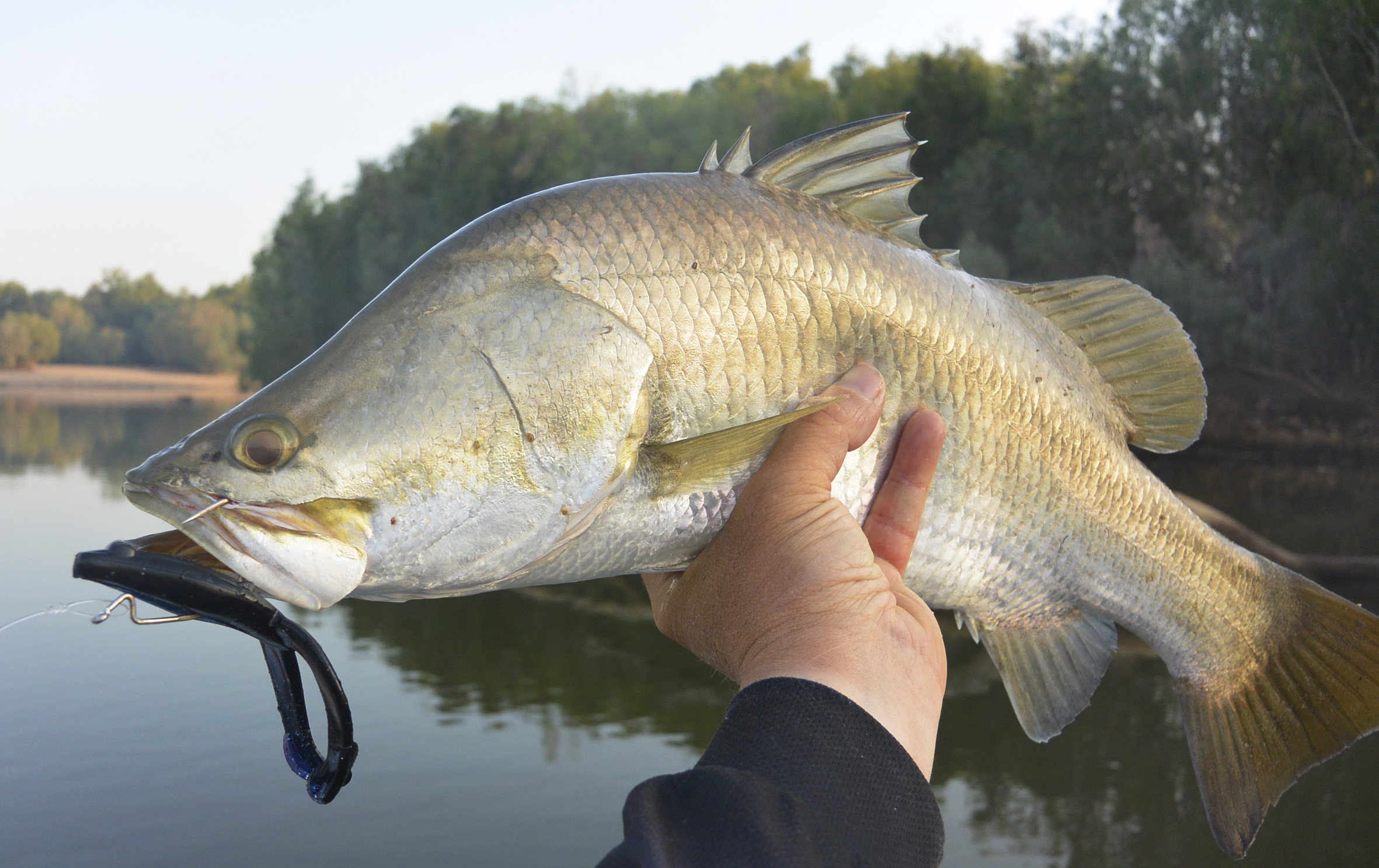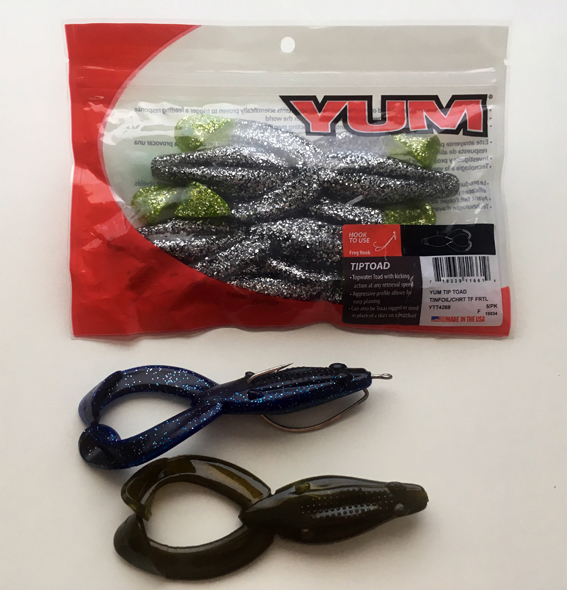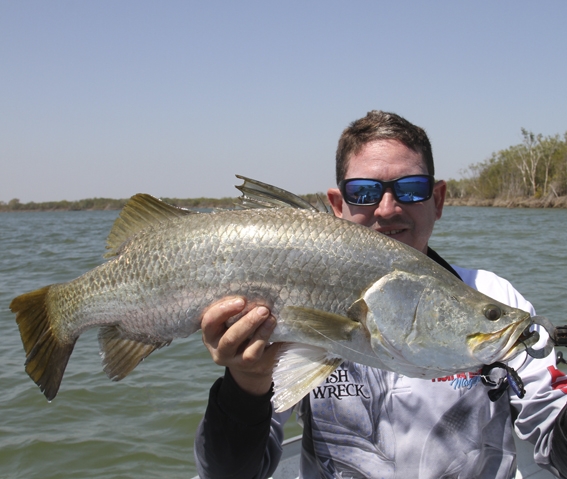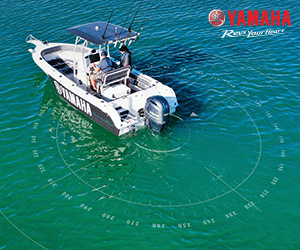Gettin’ Froggy – The Tip Toad – Dan Kaggelis
In last months’ Fish and Boat Magazine, Nathan Johnston penned an excellent feature on skipping frogs for mangrove jacks which prompted me to review one of my all-time favourite frog soft plastic lures – The YUM Tip Toad.
In the world of soft plastics, many lures look very much alike, however its often small points of difference that makes one softy perform better than others.
The same can be said when it comes to soft plastic frogs as there are many varieties on the market but in my opinion the Tip Toad has some features which really puts it up there with the best of them.

To start with, the Tip Toad has a more robust and slim line body profile than most soft plastic frogs. I am speculating here but this is probably because it was initially designed for large and small mouth bass in the United States and therefore is shaped more around the larger frogs that live in these waterways.
What this robust slim line body allows you to do is have more weight in the cast which make the Tip Toad able to be cast further distances. Many of the other frogs on the market are quite light for their size which means when flicked hard, they tend to float through the air which reduces distance. The Tip Toad really punches through the air and allows for a long-distance cast.
Every decent surface fisherman will tell you if you are fishing surface over open water with shallow submerged structure, then being able to be cast as far as possible is vital. This way you can cover maximum ground and allow fish to follow the lure as well. This is particularly the case when targeting barramundi on frogs in salt or freshwater.
Barramundi love to follow frogs for some time before boofing them down so being able to provide plenty of distance between the lure and the boat allows for that space to get them hungry enough to eat.
For example, last month I was fishing a section of freshwater river for sooties, barra and jacks. It was early in the morning, the sun was just peaking over the horizon, the wind was down, and the river surface was like a mirror- perfect frogging conditions.
I had chosen this stretch to frog for two reasons. First it was relatively shallow at its deepest – only about 2 metres deep which meant the fish were close to the lure and were there to feed in the shallows and surface.
Second this area of river had a large amount of semi and submerged trees which made for some awesome lay down structures.
These types of structures creates the perfect ambush point for predatory fish. The structure was in the middle of the river not along the banks, so it was all open water fishing and with the water being super clear, long casts were essential.
The YUM Tip Toad on 10lb Sunline Siglon allowed me to cast a mile right over the top of the submerged structure and work it back through the strike zone. As was the case, the barra would follow the frog just under the surface for 5 metres or so before committing to the strike.
Without the ability to have that extra casting distance many captured fish would have just been “follows” to the boat.
The other factor which I love about the Tip Toad is the buzz sound it creates over the water when retrieved. The feet of the Tip Toad have been refined to create a unique buzz noise which really fires up the fish.
Unlike many other frog plastics which create a paddling sound, this softy has a subtler natural trickle like noise. This can be vital as sometimes too much action and noise can scare fish. For example, on the same trip I was using a larger 5-inch frog I picked up from Bass Pro during a recent trip to the USA.
This frog was big and loud, and I thought for sure it would be a winner. In fact, it was so big and loud that it scared the fish away. The Tip Toad’s sound is perfect for those quiet early morning or late evening surface sessions when the water is calm and generating heaps of sound is not that important.
The last and main feature which really makes the Tip Toad one of the best surface frogs going around is its planing design. One of the most painful things with frog fishing is when you cast your frog, but it takes a metre of winding in line to get it to the surface and start paddling.
By this stage, your lure is out of the strike zone or even worse, a fish has already grabbed it robbing you of the surface strike you are wanting to achieve. The YUM Tip Toad has been specifically designed so that it planes up to the surface straight away eliminating this problem. In fact, I just cast them out lift them to the surface by raising the rod tip then start winding. This is perfect when you are skip casting (yes you can skip cast the YUM Tip Toad) deep behind mangrove roots and want to get that frog swimming right off the bank.

Just recently I was fishing in the saltwater estuary close to home chasing jacks on surface using the TIP Toad. They were holding on structure tight on the bank so without this feature there was no chance I would be getting the bite. I’d love to show you the pics of the jacks that session but all of them buried me hard in the timber which is something you get a bit of when fishing this tight to structure. The bite however was amazing to see and worth the loss of leader and lure anytime.
The TIP Toad would have to be one of the easiest frog lures to rig and has designated slots for both single work hooks and double devil hooks if you want the extra hook points.
I prefer a 4/0 or 5/0 worm hook threaded through the nose and out through the back. I prefer no weight on the hook at all as this will impact the Frogs ability to plane up as soon as possible.
This softy also has some pretty good imitation features with raised eyes and a patterned back which can also add to the realism of this lure.
The YUM Tip Toad is one of the best soft frogs on the market. They are great for flicking over weed beds and Lilly pads and shallow submerged structure in the freshwater impoundments and rivers or skip casted into snags or over the flats and drains in the creeks.
If you love your frogging or want to get into surface fishing, than now is the time and the YUM Tip Toad is a great place to start.





